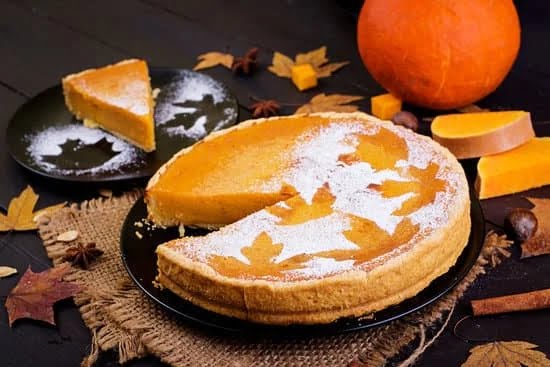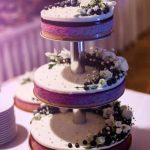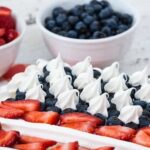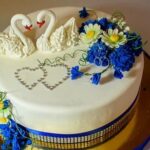Decorating a cake is like putting the final touches on a masterpiece. It’s the moment when you can let your creativity shine and impress everyone with your artistic skills. But in order to achieve those professional-looking designs, you need the right tools by your side. From spatulas to piping bags, each tool plays a crucial role in bringing your cake decorating vision to life.
Having the right tools is essential for successful cake decorating. Whether you’re a beginner or an experienced baker, using the appropriate tools can make all the difference in the outcome of your creations. Not only do they help you achieve precise and intricate designs, but they also make the process of decorating much easier and more efficient.
The beauty of cake decorating lies in its limitless possibilities, and having the right tools enhances this creative journey even further. With basic cake decorating tools at hand, you’ll have the power to transform plain cakes into breathtaking works of art that are sure to impress any audience. So let’s dive into this guide and explore all the essential tools every baker should have in their arsenal.
Essential Cake Decorating Tools Every Baker Should Have
Cake decorating requires a specific set of tools to ensure successful and visually appealing results. Whether you are a beginner or an experienced baker, having the right cake decorating tools is essential for achieving professional-looking cakes. In this section, we will discuss the must-have cake decorating tools that every baker should have in their arsenal.
- Piping Bags and Tips: Piping bags and tips are indispensable tools for creating intricate designs and decorative patterns on cakes. Piping bags come in various materials such as disposable plastic, reusable cotton, or silicone, allowing you to choose one that suits your preference.
Meanwhile, piping tips come in different shapes and sizes, each designed for specific purposes such as creating borders, writing messages, or adding embellishments. With the right combination of piping bags and tips, you can transform simple cakes into stunning works of art. - Offset Spatula: An offset spatula is a versatile tool that helps spread frosting smoothly and evenly on cakes. Its angled design allows for precise control while preventing your hand from getting in the way of your work. This tool is especially useful for achieving perfectly smooth sides and seamless edges on buttercream or fondant-covered cakes. When selecting an offset spatula, consider the size of your cakes to ensure it can comfortably handle their dimensions.
- Cake Decorating Turntable: A cake decorating turntable is a revolving platform that allows you to easily spin and work on your cake from all angles without having to move it manually. It provides stability and convenience when applying frosting or details to your cakes. Look for a turntable with a non-slip base and a smooth rotation mechanism for optimal control during the decorating process.
- Decorating Brushes: Decorating brushes are essential for adding artistic touches to your cakes. They allow you to paint on details using edible colors or create delicate brush strokes for textured effects.
There are different types of brushes available specifically designed for cake decorating purposes, such as fine-tipped brushes for intricate work, flat brushes for larger areas, and fan brushes for blending and softening colors. When choosing decorating brushes, opt for food-safe synthetic or natural bristle brushes that are easy to clean.
To summarize, these essential cake decorating tools – piping bags and tips, offset spatula, cake decorating turntable, and decorating brushes – provide the foundation for successful cake decoration. With these tools in hand, you can unleash your creativity and achieve professional-looking cakes that are sure to impress.
Cake Decorating Brushes
Cake decorating brushes are an essential tool for adding intricate and artistic details to cakes. They offer a level of precision and control that cannot be achieved with other tools, allowing bakers to create beautiful designs, textures, and patterns. Whether you are a beginner or an experienced baker, incorporating cake decorating brushes into your toolkit can take your creations to the next level.
There are various types of brushes commonly used in cake decorating, each serving a specific purpose. One of the most common types is the round brush, which is perfect for creating fine lines, dots, and delicate details. Flat brushes are ideal for painting larger areas or applying color gradients. Fan brushes can be used to create soft textures or blend colors seamlessly. And angled brushes are great for adding precise details or achieving shading effects.
When choosing a brush for cake decorating, it’s important to consider the bristle type and size. Synthetic bristles are typically recommended as they are easier to clean and maintain. Bristle size depends on the scale of the design you want to create – smaller brushes with finer tips work well for intricate details, while larger brushes are better suited for broader strokes.
Here is a list of essential cake decorating brushes every baker should have:
- Round Brushes
- Flat Brushes
- Fan Brushes
- Angled Brushes
Now that you have your brushes ready, it’s time to explore different techniques and applications. One popular technique is called “dry brushing,” where you use minimal amounts of edible coloring dust or shimmer powder on a dry brush to add depth and dimension to your designs. Another technique involves wetting the brush with food-grade alcohol or extracts such as lemon juice or rosewater before picking up edible colors or paints for watercolor-like effects.
Piping Bags and Tips
Piping bags and tips are essential tools for transforming ordinary cakes into extraordinary masterpieces. The use of piping bags allows for precise control and the ability to create intricate designs with ease. Whether it’s adding delicate lace patterns, intricate lettering, or beautiful floral decorations, piping bags and tips are a game-changer in cake decorating.
Different Types of Piping Bags and Tips
There are various types of piping bags available, including disposable plastic bags, reusable fabric bags, and silicone bags. Each type has its own set of advantages and it ultimately comes down to personal preference. Disposable plastic bags are convenient for single-use projects or those who prefer not to clean icing-filled bags. Reusable fabric and silicone bags are more durable and environmentally-friendly options that can be used repeatedly.
Similarly, there is a wide range of piping tips to choose from, each serving a specific purpose. Round tips are commonly used for outlines, lettering, and creating dots. Star tips create beautiful rosettes, shells, fleur-de-lis patterns, and other textured designs.
Petal tips allow for the creation of realistic flowers while leaf tips help bring foliage to life on your cakes. Additionally, there are specialty tips such as ruffle tips for creating frills and basketweave tips for weaving intricate designs.
Techniques for Using Piping Bags and Tips Effectively
To use a piping bag effectively, start by fitting it with the desired tip by inserting the tip into the opening of the bag. Push it through until you can see the tip emerge from the end of the bag. Then twist the top of the bag to secure it closed and ensure that no icing escapes from the top end.
Once your piping bag is ready, fill it with your desired icing or frosting using a spatula or spoon. For better control when piping, do not overfill the bag; leaving about two-thirds of the bag unfilled is recommended. Gently squeeze the bag with consistent pressure to create a smooth flow of icing as you pipe.
Practice is key when using piping bags and tips. Start with simpler designs and gradually move on to more complex ones as your skills advance. Use different pressures, angles, and movements to achieve a variety of textures and patterns. Experiment with various piping techniques like piping in a continuous motion or dotting the surface and then connecting the dots to create intricate lace patterns.
Fondant Tools
Introduction to Fondant and Its Role in Cake Decorating
Fondant has become an essential component in the world of cake decorating. This pliable icing, made from sugar, water, and other ingredients, provides a smooth and flawless finish that can transform any cake into a work of art. Working with fondant allows decorators to create intricate designs, sculpt three-dimensional figures, and achieve a professional-level finish. To successfully work with fondant, it is important to have the right tools at your disposal.
Must-Have Tools for Working with Fondant
- Rolling Pins: A high-quality rolling pin is crucial for achieving an even thickness when rolling out fondant. A non-stick rolling pin or one with removable guide rings can help control the thickness of the fondant.
- Cutters: Fondant cutters come in various shapes and sizes, allowing you to create precise designs and accents for your cakes. From basic circle cutters to intricate flower-shaped ones, having a variety of cutters will give you more flexibility in designing your cakes.
- Embossers: Embossers are used to create textured patterns on fondant surfaces. They come in different designs such as floral, geometric, or lace patterns. These tools add depth and visual interest to your cakes.
Tips and Techniques for Achieving Smooth Fondant-Covered Cakes
- Before applying fondant, make sure your cake is level and has been covered in a thin layer of buttercream or ganache. This provides a smooth base for the fondant.
- Dust your work surface lightly with cornstarch or powdered sugar before rolling out the fondant to prevent sticking.
- Roll out the fondant larger than needed so that it completely covers the cake without pulling or tearing.
- Use a smoother tool to gently press the fondant onto the cake’s surface while eliminating any air bubbles or wrinkles.
- If you need to make modifications or repairs, such as smoothing out creases or adding additional pieces of fondant, use a small piece of fondant and water as an adhesive.
With the right fondant tools and techniques, you can create show-stopping cakes that look almost too good to eat. Fondant allows for an endless array of design possibilities, from delicately sculpted flowers to intricate lace patterns. So invest in these must-have tools, practice your skills, and watch as your cakes transform into edible works of art.
Spatulas and Scrapers
Spatulas and scrapers are essential tools in achieving beautifully smooth cakes. These tools play a crucial role in spreading and smoothing icing or buttercream on your cakes, creating a professional finish. With the right technique and the right spatula or scraper, you can achieve flawless results that will impress anyone who sees or tastes your creations.
There are several types of spatulas and scrapers that serve different purposes in cake decorating. The offset spatula is a versatile tool with a bent handle that allows you to easily reach the edges and corners of your cake. It is perfect for spreading frosting evenly and creating smooth surfaces.
Straight spatulas, on the other hand, are ideal for spreading icing on larger areas of the cake. They come in various sizes, allowing you to choose the one that best suits your needs.
Cake scrapers are another important tool when it comes to achieving perfectly smooth cakes. A bench scraper, also known as a dough scraper, is typically used to level out the top of the cake and remove any excess icing or buttercream before applying the final coat.
It helps create sharp edges and a clean finish. On the other hand, an icing smoother is specifically designed to glide along the sides of the cake, ensuring an even layer of icing all around.
To achieve smooth surfaces using spatulas and scrapers, it’s important to use proper technique. Start by applying a thin crumb coat layer of icing or buttercream all over your cake to seal in any crumbs.
Then, use an offset spatula or straight spatula to spread a thicker layer of icing evenly across the top and sides of the cake. Hold the spatula at a slight angle against the surface of the cake while rotating it slowly on a turntable for maximum control.
Next, use a bench scraper or icing smoother to remove any excess icing and shape it into clean edges. Hold the scraper against the side of the cake at a 45-degree angle and rotate the turntable, gently applying pressure to smooth out the icing. Repeat this process until you achieve a perfectly smooth surface. Remember to periodically clean the spatula or scraper with warm water and dry it off to prevent any buildup of icing or buttercream.
Cake Stands and Turntables
Cake stands and turntables are essential tools for cake decorating and presentation. They not only provide a sturdy base for your cakes but also allow you to easily rotate and maneuver them while working on intricate designs. In this section, we will explore the role of cake stands and turntables in cake decorating, discuss the different types available in the market, and provide tips for choosing the right one for your occasions and cake sizes.
The role of cake stands and turntables in cake decorating is crucial. Cake stands elevate your cakes, creating a visually appealing display that showcases your creations. They also provide stability, preventing any accidental tipping or damage to your cakes. Turntables, on the other hand, allow you to effortlessly spin the cake while decorating, ensuring even coverage and consistency. This makes it easier to apply frosting or fondant smoothly without having to constantly move around the cake.
When it comes to choosing the right cake stand or turntable, there are several options available in the market. The most common types include pedestal stands, tiered stands, rotating disc turntables, and manual crank turntables.
Pedestal stands are ideal for single-tiered cakes or smaller displays, while tiered stands are perfect for multi-tiered cakes or serving multiple desserts at once. Rotating disc turntables are simple yet effective for basic decorations, while manual crank turntables offer more control and precision during intricate designs.
When selecting a cake stand or turntable, consider factors such as size, durability, stability, and ease of cleaning. Ensure that it can accommodate the size and weight of your cakes without wobbling or collapsing under pressure. Look for materials that are easy to clean and maintain so that you can reuse your stand or turntable for future baking projects.
cake stands and turntables play an essential role in presenting beautiful cakes. They provide stability and convenience during the decorating process, allowing you to create stunning designs with ease.
By investing in a high-quality cake stand or turntable, you can elevate your cake decorating skills and take your creations to the next level. So, whether you’re a beginner or a seasoned baker, consider adding these tools to your collection for a professional and visually pleasing display of your delicious cakes.
Edible Decorations
Edible decorations are a key element in cake decorating, as they can add flair and creativity to your cakes. Whether you’re looking to create a fun and whimsical design or an elegant and sophisticated masterpiece, edible decorations provide endless opportunities to express your artistic vision. In this section, we will explore the various types of edible decorations available and how they can enhance the appearance of your cakes.
One popular type of edible decoration is sprinkles. Sprinkles come in a wide variety of colors, shapes, and sizes, allowing you to customize your cakes according to different themes or occasions. From colorful confetti sprinkles for birthdays to shimmering sugar pearls for weddings, sprinkles can instantly transform a plain cake into a joyful celebration.
Another option for adding flair to your cakes is through the use of edible flowers. These delicate blooms not only add beauty but also an enticing aroma to your creations. Edible flowers such as pansies, violets, and roses can be used as individual petals or arranged in stunning displays. They provide an elegant touch that can elevate any cake design.
For those looking for a touch of sparkle and glamour, edible glitter is the perfect choice. Edible glitters come in various forms such as dusts, sprays, or gel pens. They can be used to create highlights or accents on cakes, adding a touch of magic and luxury.
Storage and Maintenance
Proper storage and maintenance of your cake decorating tools are essential for maximizing their lifespan and ensuring their functionality. By taking care of your tools, you can continue to create beautiful cakes for years to come. Here are some tips for keeping your tools in tip-top shape.
Firstly, it’s important to have a designated storage area for your cake decorating tools. A tool caddy or a dedicated drawer can help keep everything organized and easily accessible. Make sure to clean and dry your tools thoroughly before storing them to prevent any build-up of residue or moisture which could lead to rusting or damage.
When it comes to cleaning your tools, the method will depend on the specific tool. Some tools may be dishwasher safe, while others may need to be hand-washed. Always check the manufacturer’s instructions for the recommended cleaning method. For stubborn residue, use warm soapy water and a non-abrasive sponge or cloth to gently scrub the tool clean. Be careful not to damage any delicate or intricate parts.
In addition to regular cleaning, certain cake decorating tools may require additional maintenance. For example, piping tips should be checked regularly for any clogs or blockages, which can affect the flow of icing. Use a small brush or toothpick to remove any debris stuck inside the tip. Similarly, fondant rolling pins should be cleaned with warm soapy water after each use and dried thoroughly before storage.
By properly storing and maintaining your cake decorating tools, you can ensure that they stay in great condition for years to come. Regular cleaning and maintenance not only extend the lifespan of your tools but also contribute to better results when using them. Taking care of your tools is an investment in both their longevity and your creative abilities as a baker.
Remember that proper storage and maintenance go hand in hand with investing in quality tools from reliable brands. While it may require an initial investment, having high-quality tools that are designed to last will save you money in the long run. Not only will you have tools that perform better and more efficiently, but you’ll also enjoy a more enjoyable cake decorating experience overall.
Conclusion
In conclusion, basic cake decorating tools play a vital role in the success and creativity of cake decorating. These tools not only enhance your artistic abilities but also make the whole process much easier and more enjoyable. From cake brushes to piping bags, fondant tools to spatulas, each tool serves a specific purpose in creating beautiful and professional-looking cakes.
Investing in essential cake decorating tools is highly recommended for beginners. These tools ensure that you have everything you need to start your cake decorating journey on the right foot. With descriptions and explanations of each tool’s purpose and functionality, you can better understand how to use them effectively.
The possibilities are truly limitless when armed with the right set of tools. Cake brushes allow for intricate and delicate designs, while piping bags and tips help transform a plain cake into a masterpiece. Fondant tools enable you to shape and sculpt edible art, while spatulas and scrapers achieve perfectly smooth surfaces on your cakes. Cake stands and turntables provide the foundation for beautiful displays, while edible decorations add flair and creativity.
Frequently Asked Questions
What are the basic cake decorating tools?
The basic cake decorating tools include a turntable, which is a rotating platform that allows you to easily access all sides of the cake while decorating. Another essential tool is an offset spatula, which is used for spreading and smoothing frosting on the cake’s surface.
Piping bags and tips are also crucial tools, as they allow you to create various designs and patterns with icing. Other necessary tools include a bench scraper for smoothing out the frosting, cake combs or scrapers for creating textured finishes, and a cake leveler for cutting the cake layers evenly.
What is the best cake decorating kit for beginners?
When it comes to choosing the best cake decorating kit for beginners, it depends on personal preference and budget. However, some popular options include Wilton’s Cake Decorating Starter Kit and Kootek’s Cake Decorating Supplies Kit. These kits usually come with basic tools like piping bags, tips, spatulas, and couplers.
They are designed to provide beginners with all the necessary tools to start learning and practicing different decorating techniques without overwhelming them. It’s important to consider the quality of the materials included in the kit as well as its versatility in terms of allowing room for growth and experimentation.
What do I need to get started cake decorating?
To get started with cake decorating, you will need a few essentials. Firstly, invest in a good set of basic tools such as an offset spatula, piping bags and tips (both round and star-shaped), a turntable, bench scraper or smoother, and a cake leveler if you plan on baking layered cakes. Additionally, make sure you have a wide range of food coloring gels or pastes to add vibrant colors to your decorations.
Acquiring different sizes of flower nails can also be helpful when creating intricate designs like roses or other piped flowers. Lastly, having some stencils or cutters can assist you in creating consistent shapes and patterns on your cakes. Alongside these tools are ingredients such as buttercream or fondant icing that will be essential for decorating your cakes.

Welcome to our cake decorating blog! My name is Destiny Flores, and I am the proud owner of a cake decorating business named Cake Karma. Our mission is to provide delicious, beautiful cakes for all occasions. We specialize in creating custom cakes that are tailored specifically to each customer’s individual needs and tastes.





